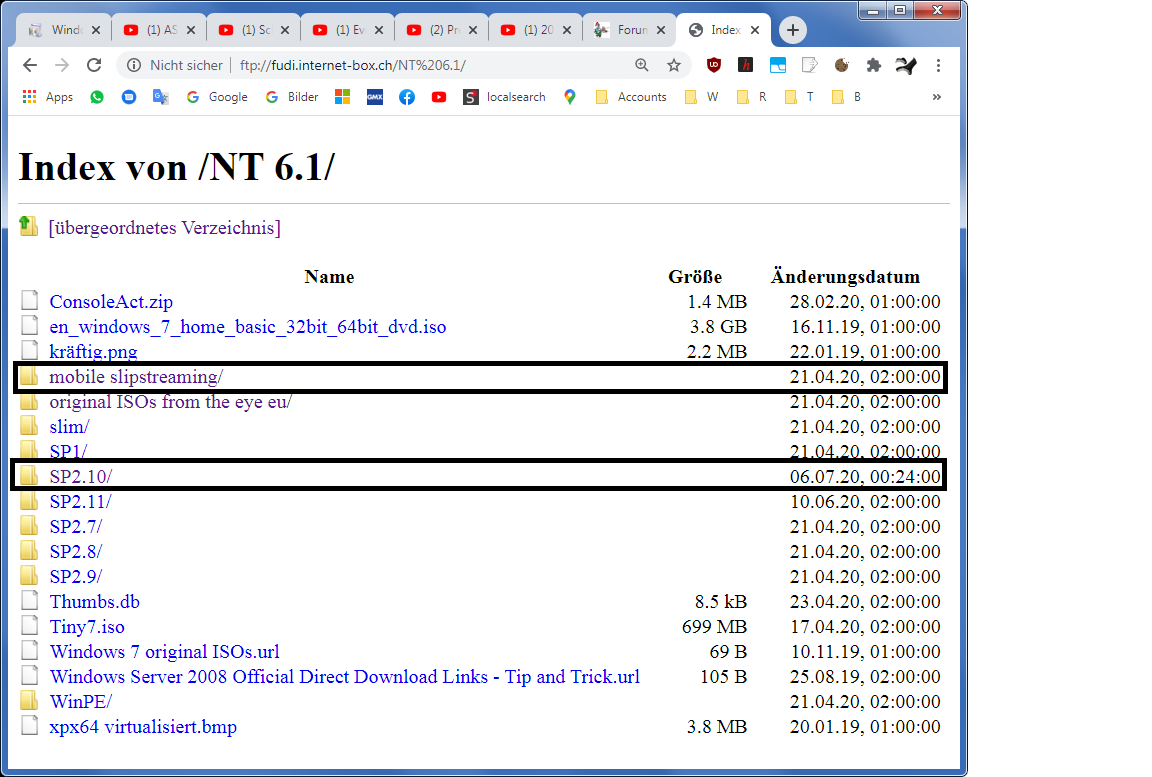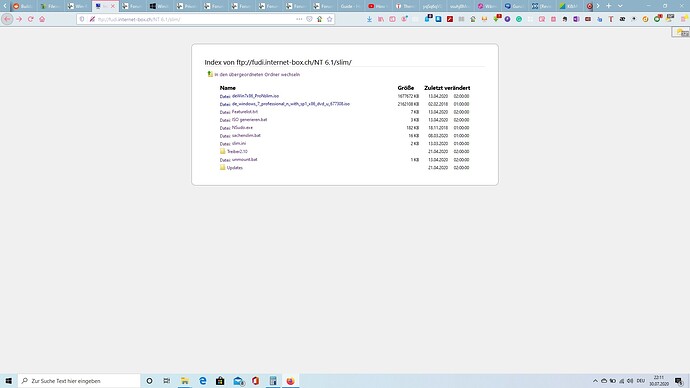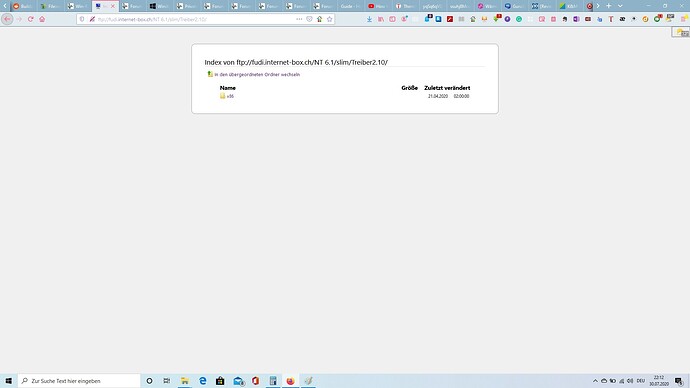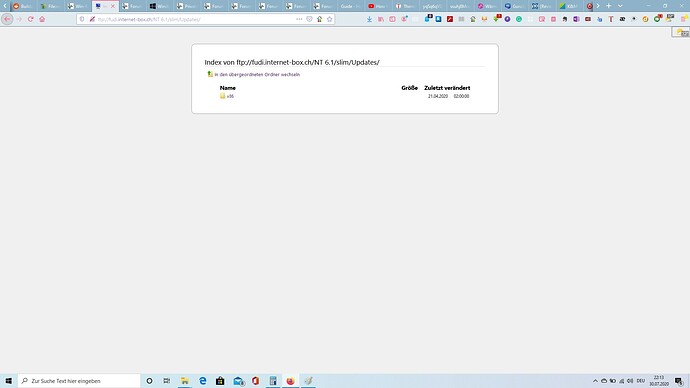So, let me get this straight for clarification:
1.) Since June 2019 it is possible to install Windows 7 also on Z390 Boards without any limitations, simply by modding the original Intel USB 3.0 drivers (5.0.4.4.3) ? Can I do this myself? (modding & signing the drivers)
2.) With the modded drivers, the USB 3.0/3.1 Controller of any Z390 Board works flawlessly and natively after installation of Win7? So, my connected USB devices (Keyboard, Mouse, USB storage media, etc.) work natively & full speed without any limitations?
3.) Are these modded drivers compatible with NVMe drives? I could successfully install Win7 on my SSD 970 Evo Plus by integrating the corresponding Samsung NVMe driver into the Win7 installation imge…
4.) Is it possible to integrate the modded drivers into an original Win7 installation image? (I have a Win7 installation DVD)
I ask this, because it looks like I’ll have to replace my current Z370 board and after reading these fortunate news, I want to go straight for an Z390 board - I’m intending to purchase an ASUS Maximus Z390 motherboard within the next days and I need to know beforehand if this method is compatible with ASUS Z390 boards…
Thanks for clarification,
AZ
@pvmt7 I don’t exactly know what you did do on your ISO that you use. Did you integrate the two official Microsoft NVMe-Updates? They are required of course to make the Windows 7 installer and Windows 7 to recognize an NVMe-SSD. Or you use original Samsung drivers for your SSD.
Or just use on of my ISOs, avaiable on my FTP-Link. I tested my ISOs on:
5-9600k
RAM: CMK16GX4M2B3000C15
ASRock Z390M Pro4
Samsung 970 Evo Plus 500GB
Greetings Patrick
@AbsoluteZero USB and NVMe drivers are two separate things. I can’t remember to have an issue with the unifficial USB drivers for Z390 and others. You can use my mobile slipstreaming script to create an ISO on yourself or just use one of my available ISOs.
First off, Thanks for responding!
I know that
But getting NVMe to work in Win7 can itself be difficult… maybe the modified USB driver(s) could somehow further complicate that - that’s why I ask this question! Of course I know, USB drives & NVMe-SSD drives are two completely different things
I managed to get Win7 (x64, SP1) to work on my Z370 board by first injecting the official Intel USB 3.0 drivers (latest version 5.0.4.4.3) and then injecting the Samsung NVMe driver, so I could install it on my Samsung SSD 970 Evo Plus drive
By the way, it’s a GPT-partitioned UEFI installation (but with CSM enabled); do these modified USB drivers have any problems with UEFI installations and/or GPT-Partitioning?
But what about the signing/certificate obstacle? Is it possible to use Windows AIK to inject unsigned/unofficial drivers or self-signed drivers? (I don’t want to use 3rd-party tools like NTLite etc. but instead official Microsoft tools or built-in Windows tools, if possible.)
Do I necessarily need IDA 7.0 (or other paid software) in order to modify the drivers myself or can free software also do the trick?
And what do You mean with "mobile" ? Do You mean, I have to run the script during the Win7 install process?
And why can I not find ANY download links for these unofficial USB drivers from canonkong everyone is talking about? - He himself mentioned in his starting post, that he removed the download links!
AZ
Thanks very much @PatrickK for getting back to me.
Potentially embarrassing lack of knowledge ahead…
So, I’ve been trying to install the ISO from post #206,page 14,
Windows 7-64BIT with USB 3.X integrated drivers.
It would appear the 2 official Microsoft NVMe updates are not integrated
into this ISO.
Does your ISO have the USB 3 integrated drivers AND the official NVMe updates ?
Thinking it does or you wouldn’t have suggested it :+)
but I could be wrong.
If that is the case, where can I download your ISO ?
Sounds like that will be the direct route to a solution for me.
And if not, is integrating the NVMe updates to the ISO from post #206
possible ?
I will not give up !!
Thanks again.
BTW Mr.Fox
I did try setting BIOS to RAID
and didn’t change anything.
But thank you for the suggestion.
I’m trying everything I can !
@AbsoluteZero Good that you know that.
‘Mobile’ means that my files can be downloaded, extracted, an ISO needs to be copied and that’s it, no installation required, it can just be copied or downloaded in Windows and it’s ready to run. I use the three command line tools dism.exe, oscdimg.exe and wimlib-imagex.exe. DISM.exe and oscdimg.exe are from Microsoft and wimlib is open source. For the signing-question I use the option /forceunsigned, as you can see in my batch file and that’s it, never had problems with that.
Greetings Patrick
@pvmt7 Cool that you don’t want to give up.
The reason why I even startet my Windows 7 Service Pack 2-ISOs is to create ISOs for Windows 7 to install it with some updates, drivers and some mods alread built-in to make our usability of Windows 7 easier or to make it even possible on younger hardware. My ISOs do have some useful updates in them, drivers for LAN, WLAN and USB of course, and the two official NVMe-Updates for native NVMe-Support, even though these two updates don’t make SMART to work, but that’s where official NVMe drivers come in, at least on my experience with one of Samsung’s 970 Evo Plus 500GB NVMe-SSD.
Everyone can download my scripts and the drivers, updates and other files that I use to create these ISOs and be aware of everything that I did and do, open source in that regard.
Here my latest post in a forum to my SP2.10-ISOs in german:
https://www.win-unattended.de/viewtopic…68ee0288961809f
Greetings Patrick
Hey, Thanks for clarification!
About your download page:
Is this the folder I should be looking for? (canonkong’s modified drivers)
ftp://fudi.internet-box.ch/NT 6.1/slim/Treiber2.10/x86/USB3/Intel/INTEL USB3.1 Driver 32bit xiaofengmod/ <- but WHY are all the drivers x86 only? I need the x64 versions…
About ImageX:
Why would I need to use ImageX? Until now, I only needed DISM.exe, oscdimg.exe and etfsboot.com (all included in the Windows AIK) in order to inject drivers into a Windows image, but not ImageX.
Thanks,
AZ
SUCCESS !!!
THANK YOU THANK YOU@PatrickK !
I don’t have any hair to pull out so things were about to get ugly
around here.
Used your W7 Pro 64 bit ISO from June 2020 and no problems !
This is going to be a stand alone audio rig so no internet
or possible complications because of that.
Just hooked up my WD 4Tb HD but not being seen yet.
But that should be relatively painless to figure out the correct drive socket
etc. compared to the W7 install:+)
Thanks again !
@AbsoluteZero You are welcome.
Yes it is.
Because you are in the 32-bit subfolder, you have to look in the x64-folder for the 64-bit stuff.
Imagex creates a finished ISO after the slipstreaming itself has finished.
Another tip for everyone: Click on the never look for updates-option just before the end of the installation, updates mostly bloat your Windows system and are not that helpful for your security, because there are way bigger risks, one of the biggest is the user in fron of a computer.
Yeah, and that is exactly the problem - there is no x64-folder/subfolder! Neither inside "Treiber2.10" folder, nor inside "Updates" folder:
Then I put my question this way: Can I achieve the same without using ImageX? Until now, I always got the job done with DISM, oscdimg.exe and etfsboot.com included in the Windows AIK - I never had the necessity to use ImageX…
AZ
Glad you got it figured out.
What do you mean with that?
AZ
@AbsoluteZero You need to navigate to the ‘mobile slipstreaming’-folder or the ‘SP2.10’-one, not the ‘slim’-folder, in the ‘slim’-folder is my Windows 7 slim project.
Afaik DISM.exe is not able to create an ISO out of an extracted folder, if you can achieve this you can use DISM.exe. And if I remeber corretly Windows AIK has its own tool to create an ISO. Just try out what you can achieve, like on other things in programing - there is not THE one way to do something, there are many differrent ways that will ‘produce’ the same or a very similar thing.

Don’t get confused by the different sorting.
@PatrickK
Brand new 4TB HD only reading 2Tb.
In order to access the full 4TB I need to
switch it to GPT format from it’s current format, MBR.
My understanding is this can only happen if the BIOS is set to UEFI.
I used Legacy mode to install your W7 ISO.
Can I reinstall your ISO using UEFI mode without issue ?
@pvmt7 Yes, you can reinstall Windows 7 with my ISOs if you choose a x64 one. Windows 7 SP1 64-bit supports UEFI installation out-of-the-box, CSM required.
But if this is not the drive that you installed Windows on, you can convert it to a GPT disk in the disk management. Windows+R>diskmgmt.msc.
Thanks@PatrickK.
It’s not the drive I installed W7 on.
and it’s brand new so I’m not concerned about losing anything on it.
I go to disk mgmt,
I can see the 2nd drive;
New Volume(D:)
1677.90 GB NTFS
Healthy ( Primary Partition )
but when I right click on it, in any of it’s locations
shown in disk mgmt.
the only options re formatting options available are "convert to dynamic disk"
or "format the disk"
Convert to GPT is not shown as an option.
Thanks @PatrickK
Ah…got it…I think.
Install your x64ISO W7 SP1 64 bit support,
BIOS set to UEFI, CSM enabled.
THEN use diskmgmt and do the conversion to GPT.
Pretty sure that’s what you were saying.




